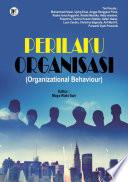
Islamic Republic of Pakistan
Punjab Public Financial Management and Accountability Assessment
The Country Financial Accountability Assessment - Pakistan (December 2003) concluded that there were substantial opportunities for consolidating current reforms throughout Pakistan, and for introducing additional reforms to further strengthen public financial accountability, which would require sustained policy level commitment at national, and provincial levels. This provincial Public Financial Management (PFM) and Accountability Assessment follow this theme of continuing reform. The PFM Performance Measurement Framework provides for a four-grade rating mechanism for measuring the attributes of PFM in a government against the benchmarks provided therein. It provides a useful mechanism for charting a path towards demonstrable improved PFM. The study notes that the reforms already underway are developing a strong trajectory for PFM improvement, and this report sets out the continuing concerns, challenges, and proposals for further reforms and development, while setting the issues for further negotiation, although most issues are within the capacity of the Punjab Provincial authorities. Areas for urgent additional reform are in the budget execution, accounting and audit areas, and specific areas for priority attention suggest the improvement of arrears information on expenditures and revenues; of frequent monitoring of fiscal risks arising from State-Owned Enterprises (SOEs), including contingent liabilities and government guarantees; improvement of procurement processes, through the implementation of the proposed new procurement law; improvements in services delivery and budget execution, through reductions in procedural delays, and increases in community knowledge of budget information; and, the introduction of an adequate system of internal auditing, based on standards promulgated by the Institute of Internal Auditors.
- ISBN 10 : OCLC:931672561
- Judul : Islamic Republic of Pakistan
- Sub Judul : Punjab Public Financial Management and Accountability Assessment
- Pengarang : Weltbank,
- Bahasa : en
- Tahun : 2012
- Google Book : http://books.google.co.id/books?id=Mh2HzgEACAAJ&dq=intitle:Islamic+Financial+Management&hl=&source=gbs_api
-
Ketersediaan :
The Country Financial Accountability Assessment - Pakistan (December 2003) concluded that there were substantial opportunities for consolidating current reforms throughout Pakistan, and for introducing additional reforms to further ...









